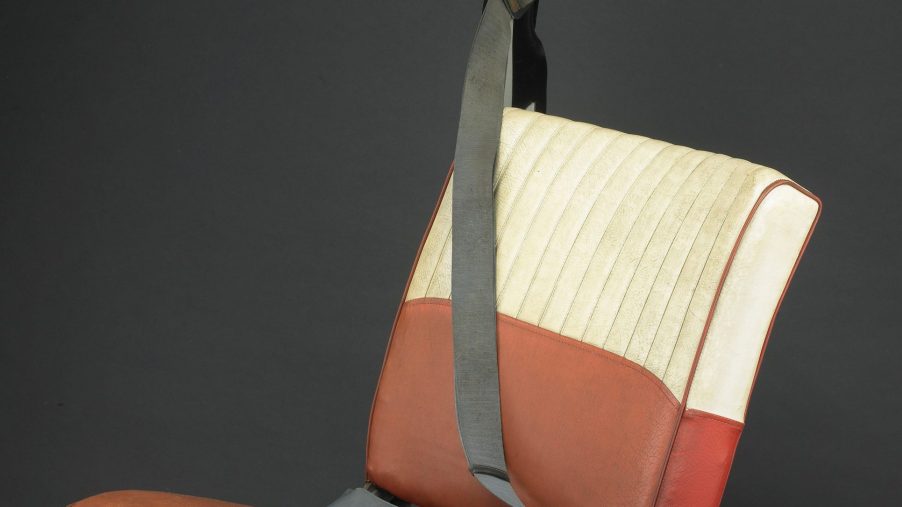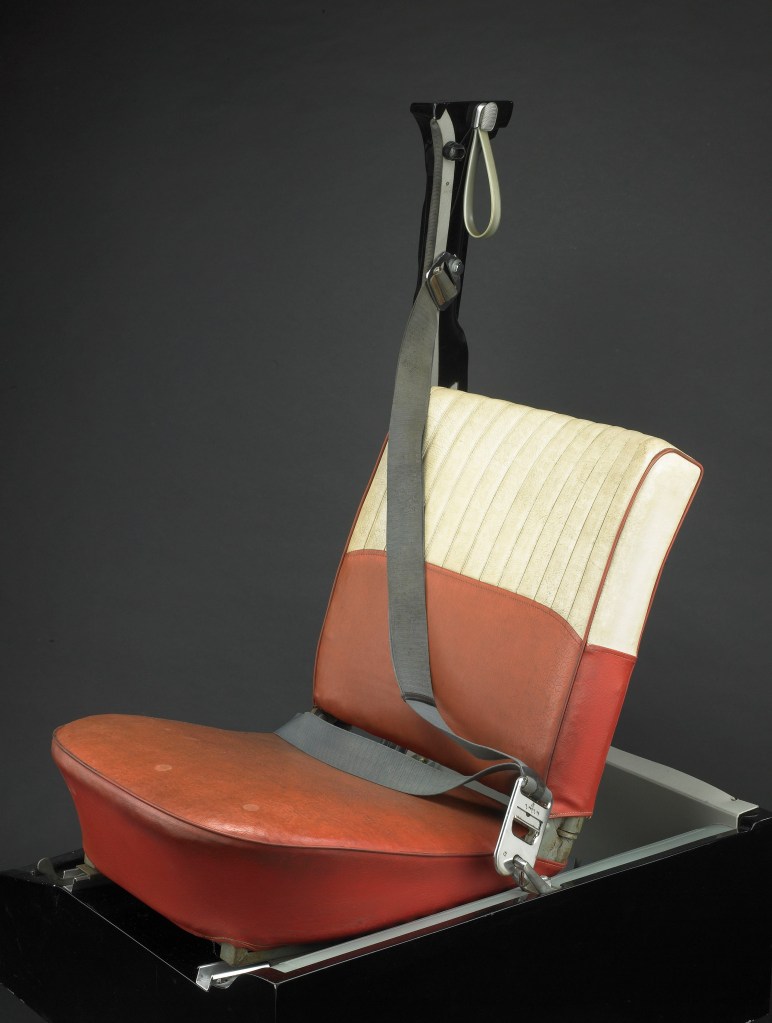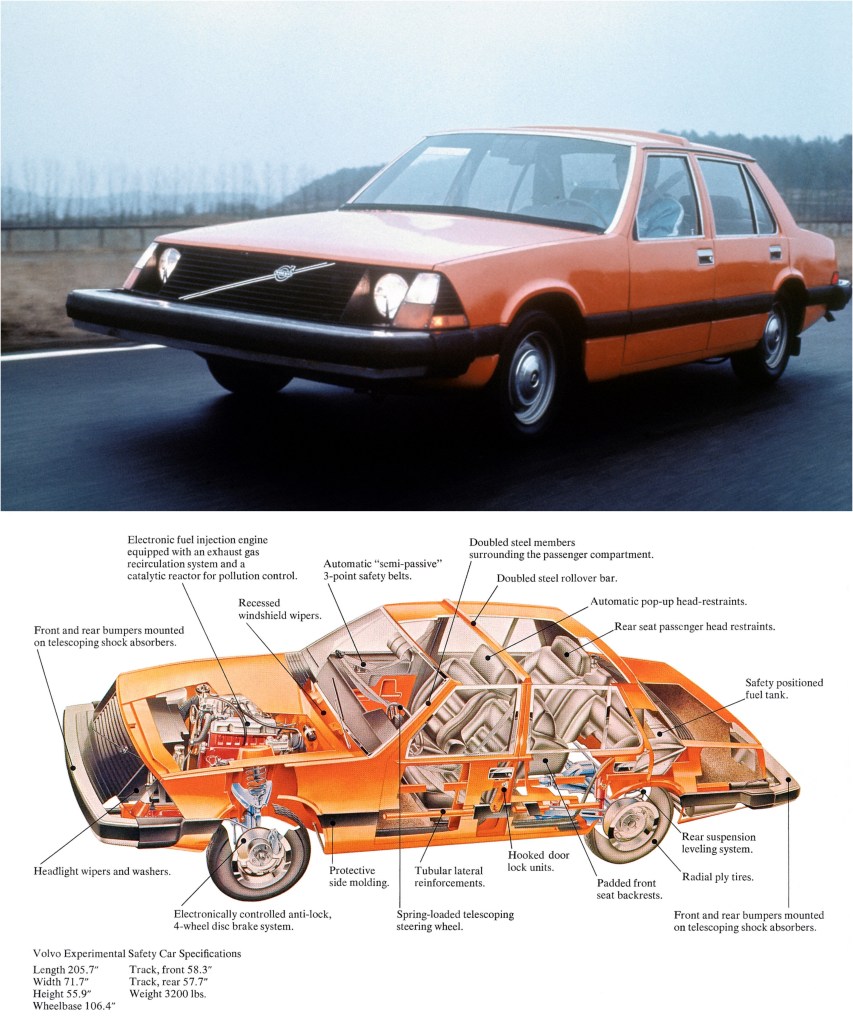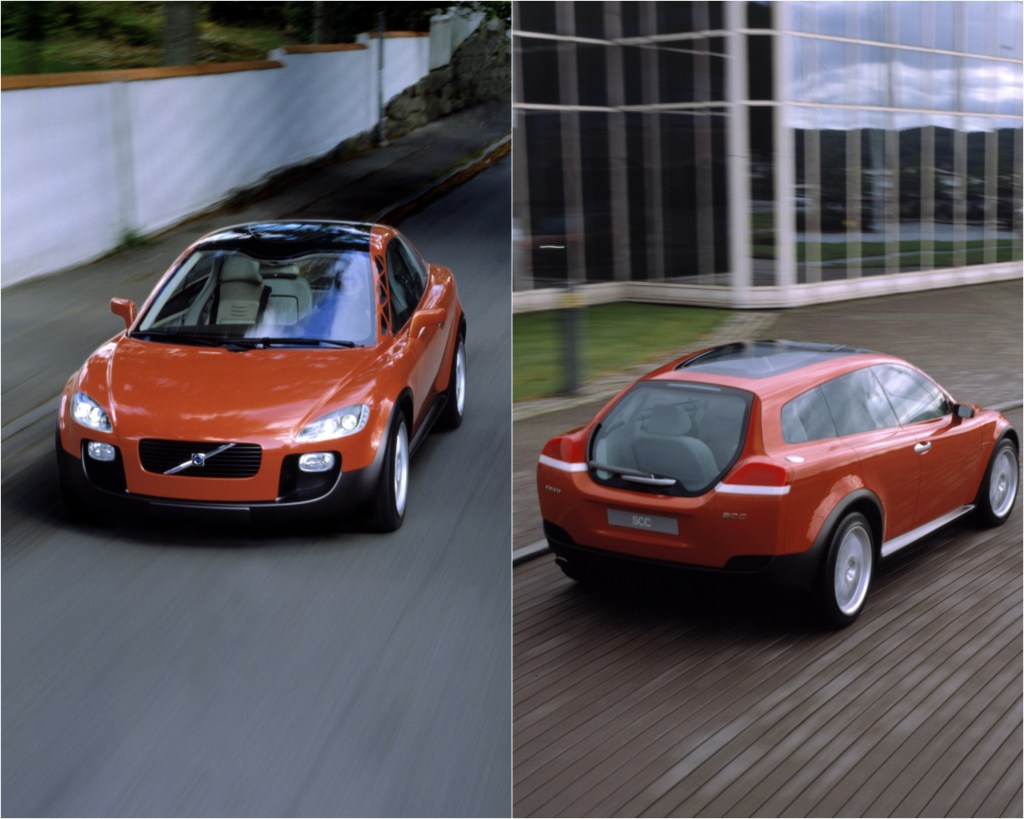
Crash Safety Technologies Pioneered by Volvo
Volvo’s unmatched by any other automaker when it comes to safety technology. They promised zero fatalities by 2020, prompted by the new forward collision avoidance tech added to their production cars in 2006. But that’s just one of the many inventions and designs Volvo created that put safety at the forefront. So let’s look at all the features we take for granted today that Volvo revolutionized.

Volvo patented the three-point seat belt in 1959
Nils Bohlin is the man to thank if you’ve ever buckled into a three-point seatbelt, which I’d imagine you have. Before him, cars had a simple belt across the lap that only kept the waist in place. If one got into an accident, their entire upper body would collide with the steering column, rather than stay secured to the seat. Not only that, but they were uncomfortable and largely unused. However, due to their effectiveness, three-point seatbelt usage amongst Swedish drivers jumped from 25% to 90% between 1965 and 1975.
Now, this is where Volvo’s true colors really show. Back when the three-point seatbelt was first invented, Volvo patented the design. That meant they could license it to other automakers at a price, while holding a monopoly over this one life-saving safety feature. But rather than keep it all to themselves, Volvo released the patent-free of charge, allowing any automaker to copy the design and reap the benefits.
Forbes estimated that, if Volvo had licensed their patent at $10 per car, they would’ve made $400 million. But they didn’t, opting to let competitors have the tech for the better of the consumer. It’s just one of the many ways Volvo has proven that they care about keeping people safe, no matter what car they drive.
That’s the most famous safety technology Volvo ever released, recognizable on an individual scale. But in order to showcase all the safety technology Volvo’s ever laid a hand in, we have to look at the two safety car concepts they developed. That all started in 1972 with the Volvo Experimental Safety Car, or VESC for short.
The VESC made high speed crashes safer than ever

This long, awkward-looking car was designed to make 60 mph crashes survivable. And in order for that to be possible, it introduced a handful of techniques cars still use today. For starters, Volvo already began implementing crumple zones, particularly in the sides, as well as headrests to avoid whiplash. But the front end of the car is where the crash safety features really shine.
In an impact, the engine would be forced under the cabin, rather than into the driver. Along with that, Volvo created a spring-loaded steering wheel. That way, the steering column pulled into the dashboard, rather than pushed into the driver. Both these ideas helped prevent the driver from being crushed in a frontal accident, a problem still quite common in the 70s.
But the tech doesn’t stop there. Obviously, the three-point seatbelts were integrated, as were front and rear airbags. And along with a backup sensor, the VESC had a rearview camera (yes, in 1972). It was a simple, small television (provided by Mitsubishi Electric) mounted in the center console. Granted, this wasn’t the first-ever backup camera, that award goes to the 1956 Buick Centurion Concept.
But this isn’t the only time Volvo packed a ton of safety tech into a concept car. Fast forward to 2001, they did it all over again with the Safety Car Concept, or SCC.
The Volvo Safety Car Concept was the sequel to the VESC

While the VESC was more mechanical, the new SCC was packed with electrical technology. With design cues highly reminiscent of the old C40, the SCC introduced more modern technologies you’d find on cars today.
One such technology was adaptive cruise control, where the car will maintain a following distance between it and the car in front. However, while Volvo didn’t invent adaptive cruise control, they were the first to allow the car to control the brakes as well as the gas. The earliest versions of adaptive cruise control introduced by Mistubishi in the 90s only allowed the car to control the throttle.
They did, however, invent the blindspot detection system that would be implemented in production cars for 2003. This tech was first featured on the SCC, and was capable of spotting other cars hidden out of the driver’s sight. And frontal collision warnings/automatic braking systems, first introduced on the concept, would make their way to production cars in 2006.
With so many familiar technologies under their belt, it’s no wonder Volvo has established itself as the leader in safety. From the simplest of seatbelts to the most advanced sensors, Volvo hasn’t missed a beat in terms of safety technology. And as they head into an all-electric future, that plan isn’t set to change.


